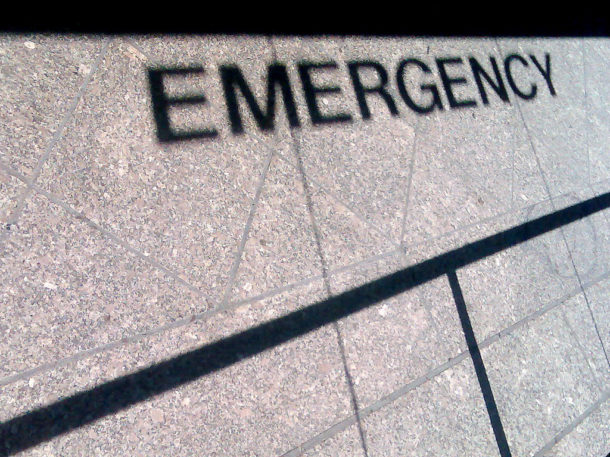With record-low occupancy, rising labor costs, and other pressures eroding the bottom line, the need for nursing homes to innovate to survive has never been more pressing.
In their quest for innovation, skilled nursing providers are turning to new partners, such as a Silicon Valley startup offering a solution to prevent residents from going to hospital emergency departments.
Preventing ER visits could make a SNF a more attractive referral partner for hospitals and health systems, which under value-based care models are dinged financially for readmissions. And if SNFs can help cut emergency room usage, they’ll also prove their value to D.C. legislators and policymakers by reducing Medicare expenditures.
“This has potential to save billions of dollars,” said Joel White, President and CEO of Horizon Government Affairs, a Washington, D.C.-based consulting firm. “Even if it’s $1 billion over 10 years, that’s big and the right thing to do; it keeps them out of the hospital, and saves resources.”
The challenge is that most nursing homes aren’t staffed to handle emergencies. Typically, they send distressed patients to a hospital emergency department, and these types of transfers can be expensive and harmful to patients — while also potentially harming SNFs’ Medicare reimbursements and standing with the Centers for Medicare and Medicaid Services (CMS).
One company looking to change that is Call9, a Silicon Valley-based firm that recently closed on an additional $24 million in funding last September, bringing the total raised to $34 million. Backed by influential firms such as Y Combinator, Index Ventures, and SV Angel, the company sees itself as part of the future by bringing an emergency room doctor right to the bedside in a skilled nursing community; Horizon Government Affairs has also worked with the company as a consultant.
To help keep patients in the facility and out of the hospital, Call9 embeds paramedics on-site at the SNF and gives patients real-time access to emergency care. Using those first responders and Call9’s telemedicine technology, the nursing home gets access to doctors who are able to see, diagnose, and treat patients in the community rather than having to send them to the emergency room.
Currently in eight facilities and adding one per month on average, the company is slowly growing its user base and working with providers like Centers Health Care, ArchCare, and CareRite.
“They are already looking for solutions [to reduce re-admissisions]; we are giving them a unique solution,” said Timothy Peck, co-founder and CEO of Call9, during an interview with Skilled Nursing News. “[All the payors] are squeezing them, asking them to keep costs down and improve quality at the same time, but not looking to pay them more.”
Call9 is already working with insurers such as Anthem, Blue Cross Blue Shield, and Healthfirst and participating in different Medicare Advantage programs. The insurers have been quick to jump on board after Call9 has shown it can dramatically reduce the number of transfers to emergency rooms. One study, which consisted of 654 patients who used the emergency telemedicine service over a nine-month period, showed the facility was able to prevent roughly 70% of those patients from being transported to the hospital.
Call9 customers have also used the platform to care for more complex, higher-acutiy residents, allowing them to fill unused beds. Hospitals are more likely to refer patients to a location with services similar to Call9’s offerings, according to Peck. This is backed up by other providers as well: Brookdale Senior Living (NYSE: BKD) and the Ensign Group (Nasdaq: ENSG) have seen referrals increase to a SNF unit that has been designed specifically for more complex patients.
“They want to send their sicker patients to a place they will be taken care of and not bounce back for 30 day re-admits,” Peck said. “[Our customers] have better results and they get more patient referrals.”
At this point, Call9 has set its sights firmly on nursing homes, which drive 19% of all the ambulance trips to the hospital emergency room, according to Peck. However, the company hasn’t ruled out other care settings in the future.
“We are focused on nursing homes, but we have already started the conversation with assisted living and home care,” he said.
At the end of the day, Call9 is looking to work with operators that understand that the skilled nursing world is changing.
“If they are innovative operators, those are the ones that we want to work with,” Peck said. “We want to work with people who get the larger picture, want to deliver higher quality care, and understand the payment model is changing.”
Written by John Yedinak
Companies featured in this article:
Anthem, Blue Cross Blue Shield, Brookdale, Call9, Ensign, Healthfirst



